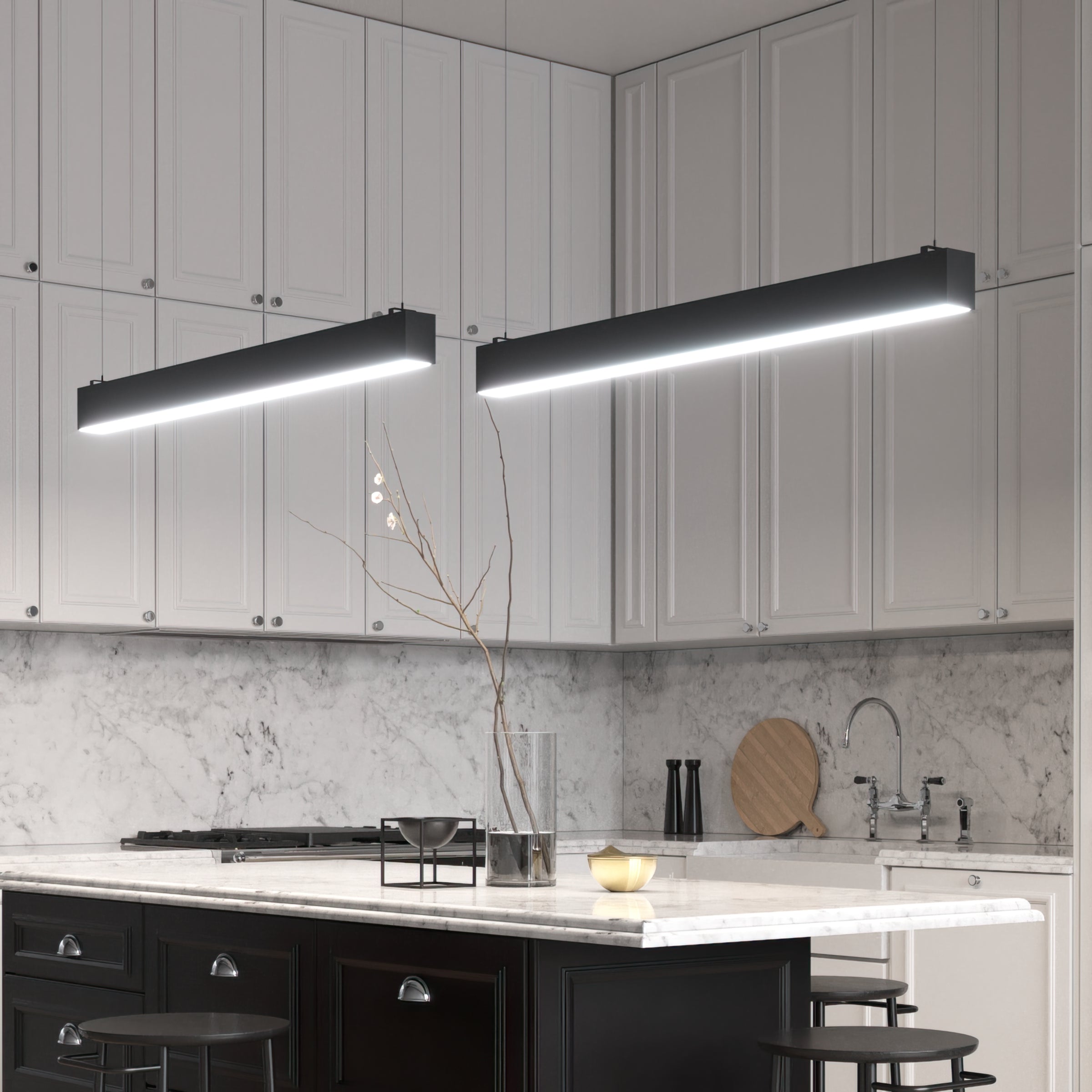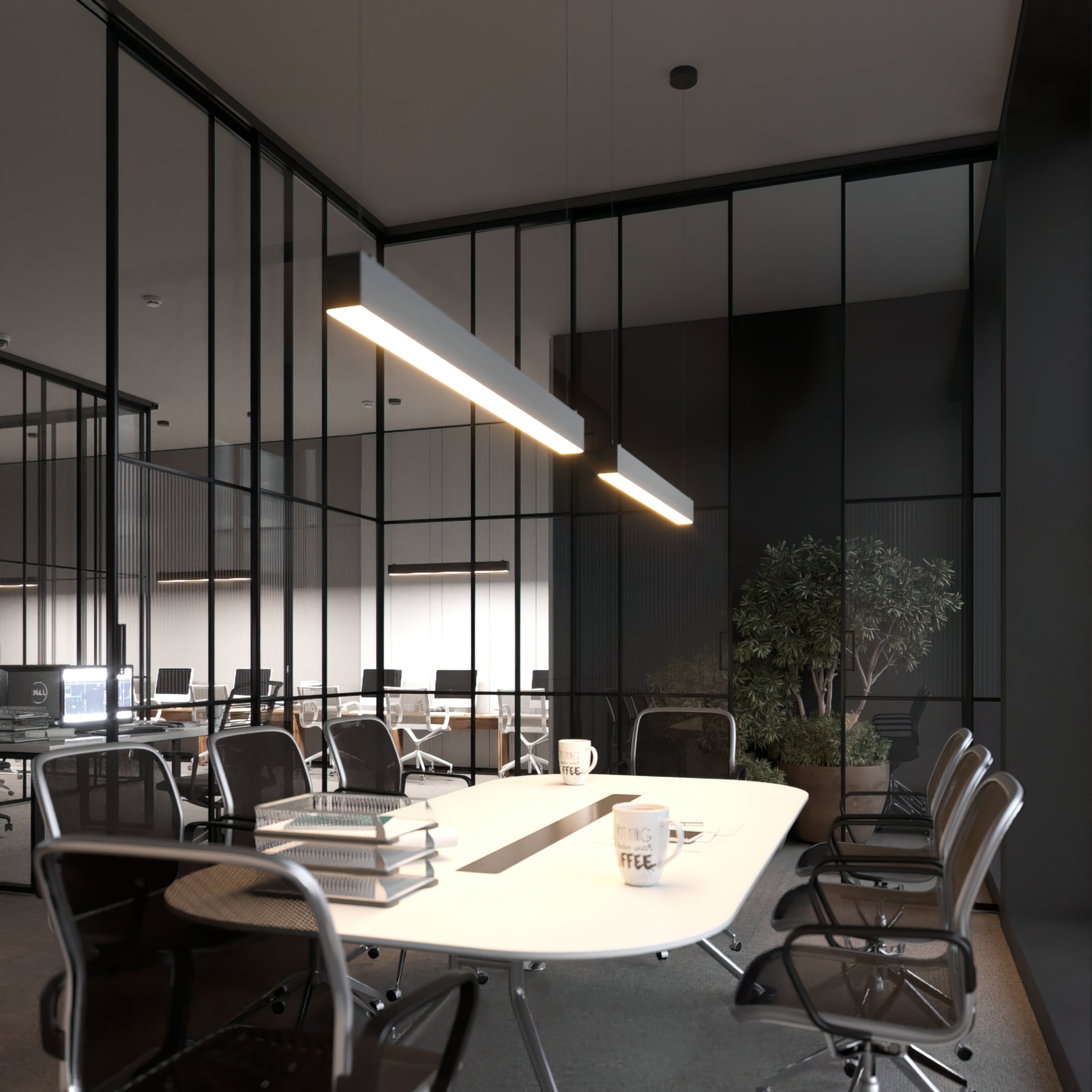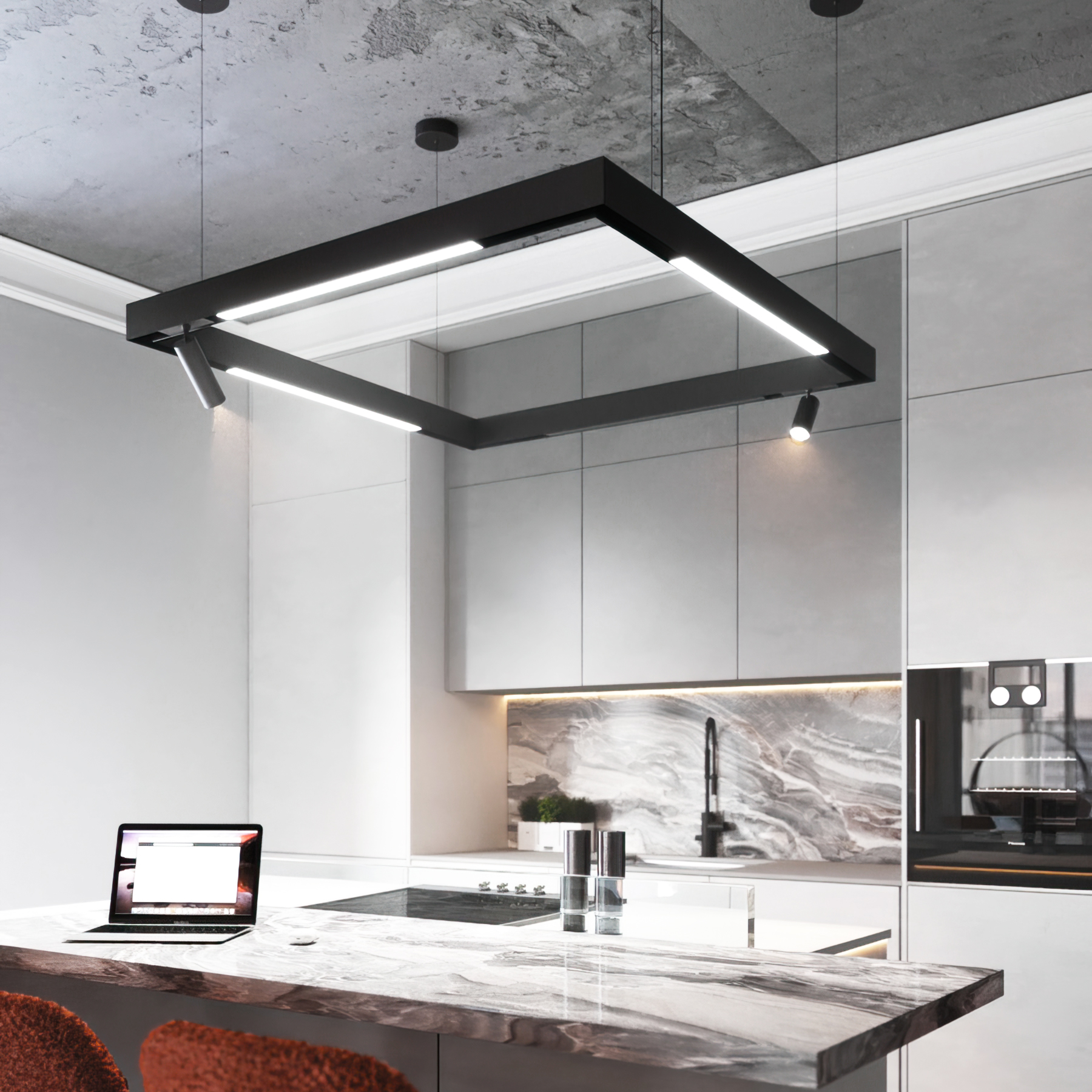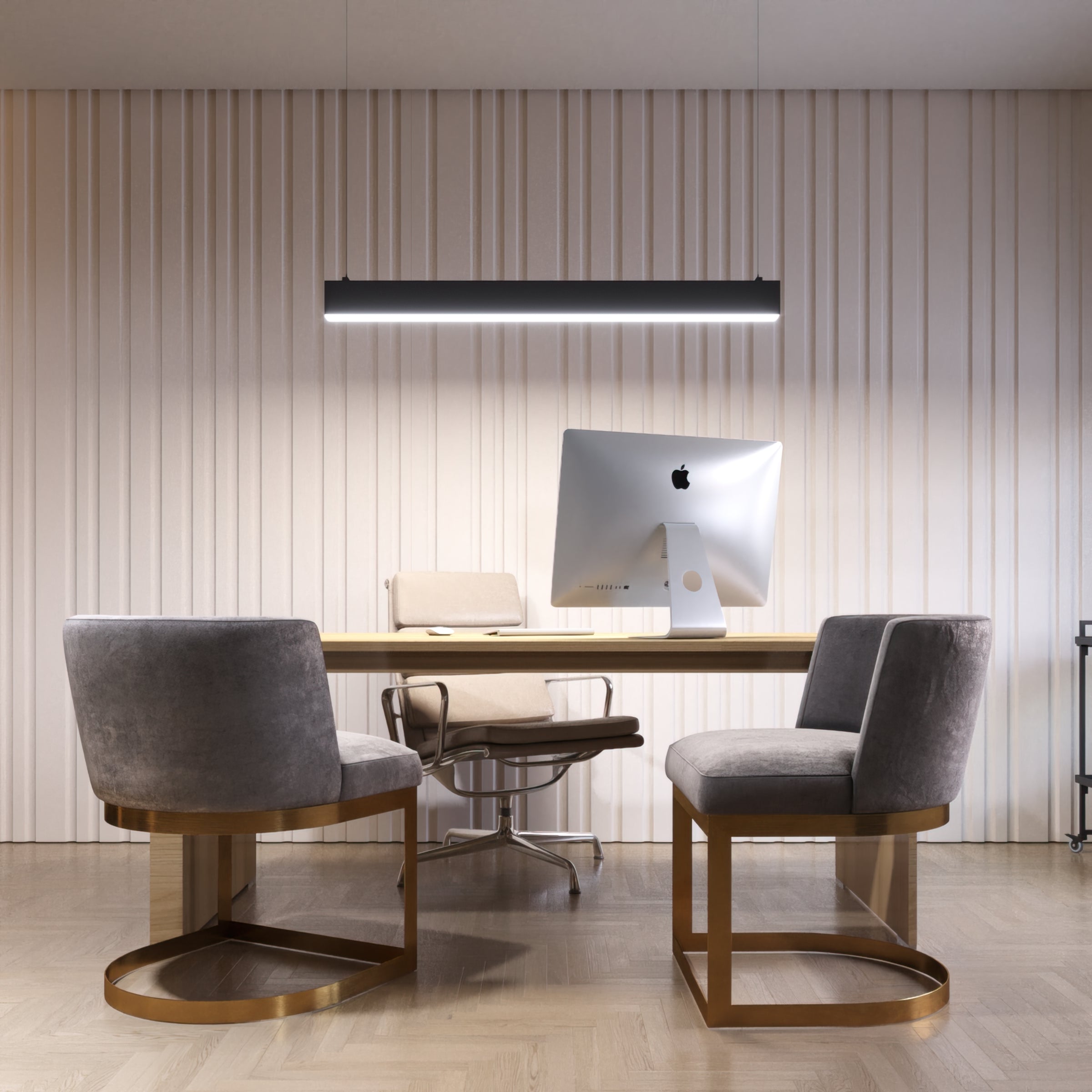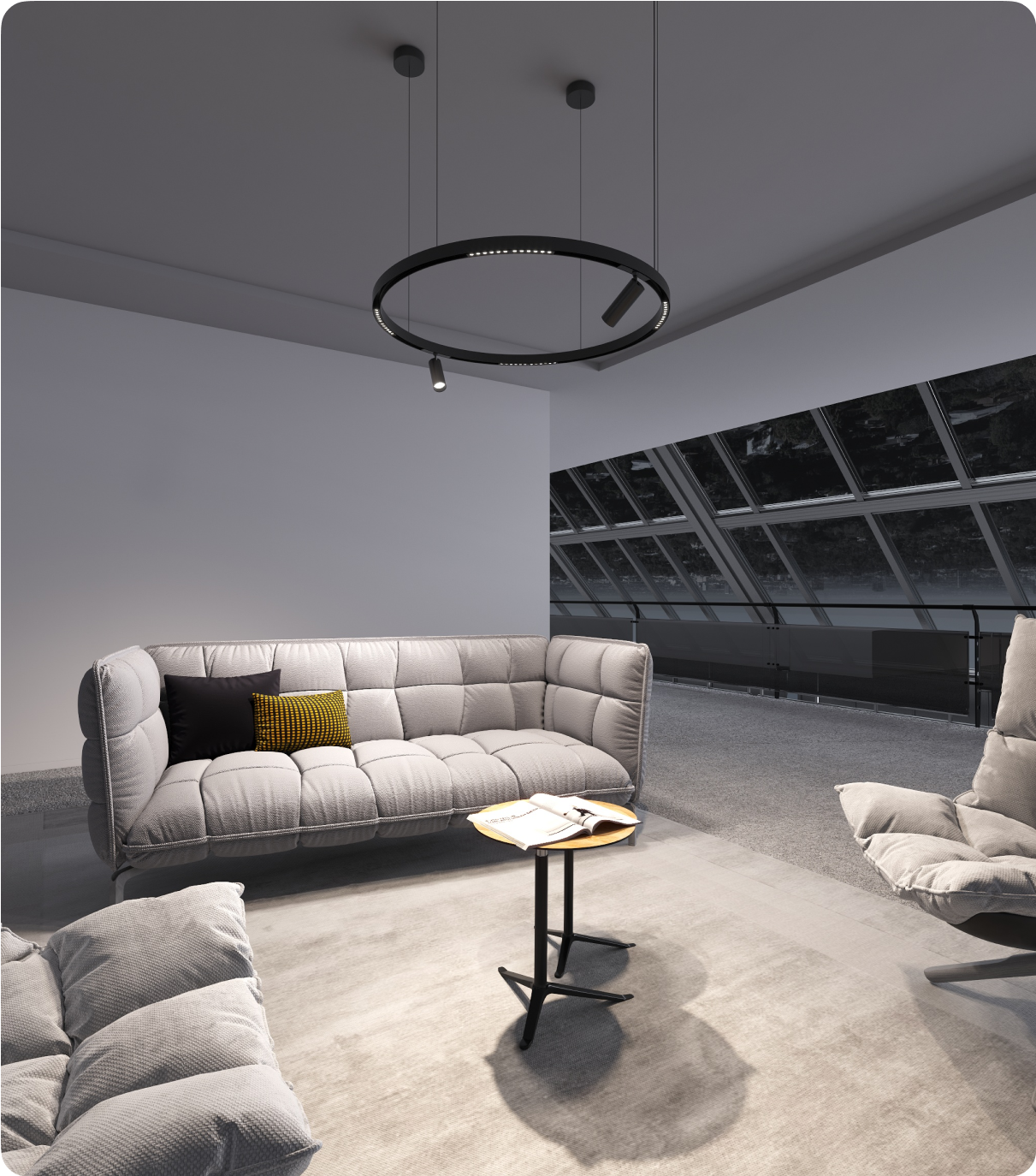Lighting plays a critical role in creating the ambiance and functionality of any space. Without proper illumination, even the most beautifully designed room can feel uninviting or unproductive. Therefore, it's crucial to plan the lighting scheme carefully to achieve the desired effect. This article aims to take a closer look at the concept of how to layer lighting and provide some tips on planning your illumination scheme for your place.
What is Layer Lighting, and Why is It Important?
Layered lighting is an essential technique combining three lighting methods to brighten a space. It uses a base layer and accents to create dimensions and textures throughout the room, complementing each layer to establish a comprehensive illumination solution. This approach helps to build a functional and aesthetically pleasing room. You can use various light fixtures and sources to achieve your desired design, such as floor lamps and overhead fixtures. Whether you are lighting a theater or a sports venue, different environments require specific lighting considerations, and layered light can help accentuate particular features and areas. Its benefits include adding depth and dimension, setting the mood, showcasing specific features, and creating a comfortable atmosphere.
Add Depth and Dimension
Layered lighting can turn a uniform or dull space into an engaging one. Without various layers, the light may look unflattering or lifeless to visitors. Layered lighting adds depth and texture to a room, making it more aesthetically pleasing and exciting.
Consider a Mood
Layered lighting can easily alter a room's mood by adjusting one or more layers. The various layers work together to establish a complete ambiance design, and dimming an accent light, for example, can create a softer atmosphere. The other lighting layers will complement this change and update the entire space's mood, allowing for a comprehensive and versatile illumination solution.
Showcase Specific Features
Lighting can be used to highlight specific areas or features of a space. Layered lighting allows you to draw attention to exciting features while providing sufficient light for the entire room. For instance, you could emphasize wall art, a countertop, or a desk.
Create a Comfortable Atmosphere
By incorporating three layers of lighting, an inviting atmosphere can be created that is aesthetically pleasing to guests and users. The layers are balanced throughout the room, ensuring the space is well-lit and visually appealing.
Ambient Lighting
Ambient lighting is one of the three types of lighting used in layered lights. It provides glare-free, general illumination in space and is used to build upon natural sunlight with soft ceiling, floor, and wall lighting. Our round lights are an excellent option for ambient lighting.
To determine how much light you need, understand how to measure bulb brightness using lumens, which measure visible light. Generally, 20 lumens per square foot is sufficient for ambient lighting. About 5,000 lumens from various sources should be adequate for an average living room, but additional lumens may be required depending on vision or obstructions. As a starting point, one light for every 4 square feet of ceiling is recommended for recessed lighting.
- Daylight: Natural light from windows, skylights, atriums, and lighting tubes can effectively illuminate indoor spaces during the day.
- Flush Mount: Flushmount and semi-flush mount ceiling lights are ideal for lighting spaces with low ceilings, designed to fit snugly against the ceiling.
- Chandelier: Chandeliers are light fixtures with a branched frame with multiple lamps illuminating the surrounding area. They are inspired by the classic candelabra design.
- Pendant: Pendant lights are ceiling fixtures that hang by a single cord, chain, or metal rod. They have fewer bulbs than chandeliers and can be used in multiples for more light. They are often arranged straight or clustered over a dining table or kitchen island.
- Wall Sconce: A wall sconce is a light fixture attached to a wall for support and electrical needs. It directs light upward to the ceiling, creating a soft ambient light.
- Torchiere: A torchiere is a tall lamp with an upward-facing shade that reflects light off the ceiling to illuminate a large area. It is not intended as a task light like a floor lamp.
- Cove: Cove lighting uses slim fixtures, like LED tape lights, located in ledges, recesses, ceiling valances, or high on walls to direct light upwards towards the ceiling.
Task Lighting
Specialized task lights are an excellent option for illuminating your workspace and increasing productivity. Not only do they provide focused and bright illumination during at-home activities, but they also help you see what you're doing more clearly. Our linear lights are an excellent example of task lighting that will make your work easier and more enjoyable.
When it comes to task lighting, keep in mind that it is not designed to illuminate an entire room. However, focusing on your workspace still requires more lumens than ambient lighting. To determine the minimum lumen level needed for adequate task illumination, multiply your task area's square footage. You will then be able to estimate how many lumens you need to light up your workspace.
To fully customize your workspace, it is important to select fixtures with built-in dimming capability or connect them to a dimmer switch. This will allow you to not only adjust the brightness of your workspace to your liking but also help create a comfortable environment conducive to work. In addition to dimming capability, it's important to look for fixtures with movable arms, shades, and other adjustability features. These features will help you adjust the lighting in your workspace in a way tailored to your specific needs, whether for reading, writing, or other tasks.
Choosing the right color temperature is also crucial regarding detailed projects and reading comfort. For example, the cool and bright 4000 Kelvin tones are great for sewing and painting models because they provide excellent clarity and contrast. However, for a more comfortable experience, a warmer 2700 to 3000K reading lamp is recommended to use that mimics traditional incandescent bulbs. This will help reduce eye strain and create a more relaxing environment for you to work in.
Accent Lighting
Lighting accents are the third level in layered lighting and are utilized to emphasize individual elements in a room, such as art, plants, or architectural details. It adds depth and dimension to the space as well as creating a focal point. Track lighting is an excellent option for accent lighting as it is versatile and can be used to direct light at specific areas or objects. Our track lights are excellent for creating a dynamic and flexible lighting solution in your space.
- Track or Monorail: Track lighting is a versatile option for accent lighting as it allows for a system of suspended track or rail heads with multiple adjustable spotlights, providing the ability to direct light in various directions and highlight specific features in a space.
- Wall sconces: They come in different shapes, sizes, and styles, making them suitable for creating focal points on the wall. When placed on opposite sides of an object, they can draw the eye to the decorative accessory.
- Picture lights: Picture lighting is an easy-to-install and effective way to make the artwork stand out. These lighting fixtures often come in plug-in models that don't require any electrical work.
- Recessed: Recessed lighting can be installed and focused on highlighting an object or washing down a nearby wall without being obtrusive.
Mix All Types of Lighting to Create the Perfect Layout
The three layers of lighting – ambient, task, and accent – work together to create a cohesive and dynamic lighting scheme. The best results can be achieved when you use all three types of lighting in interior design, creating a balanced and comfortable atmosphere.
Think about how each layer will interact with the others when planning your lighting scheme. For example, an overhead chandelier can provide ambient lighting and serve as a decorative accent. Task lighting can be used to illuminate a workspace while also drawing attention to specific design elements. Accent lighting can highlight artwork while adding depth and dimension to a room.
Various lighting sources and fixtures can create a layered effect, adding visual interest and a comfortable and inviting atmosphere. Consider using a mix of table, floor, and overhead fixtures to achieve the desired effect. By carefully combining and balancing all three layers of light, you can create a lighting scheme that is both functional and aesthetically pleasing.
In addition: How to Choose Lighting Depending on Your Needs
After learning about the different types of lighting layers, it's important to ask the right questions to determine the best lighting fixtures for your space. Consider consulting with a lighting designer to help find fixtures that match both your tastes and budget. No matter what, it's important to have some form of task lighting in almost every room, with ambient and accent lighting filling in the gaps. Take some time to reflect on your lifestyle, preferences, practicality, and color scheme when planning your lighting design, whether you choose to conduct the search and installation yourself or with the help of a professional.
- Contemplate the purpose of the room and the activities or tasks you will be doing, and evaluate your daily habits to plan the appropriate amount of LLD for the room. When you are doing homework or taxes, you need enough light to see clearly, but when you watch TV or relax in a den, you do not want too much light.
- When planning your lighting scheme, reflect on what features of the room you would like to highlight. For example, some people may focus accent lights on textured walls or built-in bookcases, while others may want to draw attention to fireplace mantels or family photos. Take into account what types of light fixtures you prefer and dislike. If you don't like chandeliers or find wall sconces outdated, consider installing modern track lighting or recessed can light instead. It's important to examine fixture finishes and styles to ensure that you don't end up with lighting that you hate.
- It's important to decide whether the project is a new construction or a remodel. New construction may be easier to incorporate lighting design into the architecture, while a large-scale remodel may involve replacing the entire ceiling and lighting system. In a remodeling project, it's important to locate all existing wiring and electrical outlets, which may require replacing or adding a few key fixtures. Some newly constructed houses already include recessed lighting, which can simplify the remodeling process.
- When considering the color scheme of a room, it's important to think about the mood you want to create. Do you want a cozy and warm feeling or a bright and airy atmosphere? Keep in mind that darker colors absorb more light, so you may need to increase the intensity or number of lights in rooms with darker paint or furniture finishes. The color temperature and lumen output of the bulbs you choose can also affect the color of the room, transforming it from sunny and bright to intimate and cozy, like a fireplace.
To plan your lighting scheme, follow a formula for determining how many Lumens you need for each type of lighting. Multiply the square footage of the room by 20 for ambient lighting and by 30 or 50 for raised surfaces or task lighting. These guidelines can help you estimate the brightness for each layer of lighting in your space.
To create the perfect lighting scheme, install dimmers in every room to control light levels for special occasions and times of the day. Use warmer and dimmer lights in bedrooms for sleeping and task lighting for bedside tables and closet areas. Bright lights are needed on vanity mirrors, but bathrooms should also be well-lit to avoid accidents. Dining rooms should have a chandelier, kitchen under-cabinet lighting, and home office desk lamps. Light stairways from top to bottom to avoid injuries. Every space deserves a logical and observant lighting plan.
